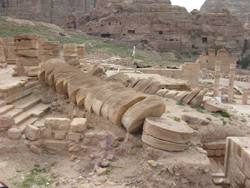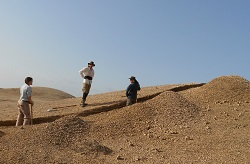Turning back time on volcanic eruptions in the Middle East
Earthquakes in the Middle East have a long history of ravaging the area and leaving destruction in their wake. Recently, Western Turkey experienced large seismic events that incurred loss of life and billions of euros of losses. The Dead Sea fault which incorporates sites in Jordan, Lebanon, Syria and Turkey is still a volatile region for large-scale earthquakes. The APAME research team set to work looking at textual and archeological references in the region from prehistoric, Greek, Roman, Byzantine and Islamic periods. It involved excavation at various sites including sites in the Jordan valley and the 'lost villages' in Syria. Each site was the location of extensive field investigations and included the collection of topographic maps, detailed logs, photos and samples which were used for isotopic dating. The information collated was then compiled into a comprehensive database of this tremendous body of work. In addition, maps of the localities where damage was recorded were prepared as a general site map at a scale of 1:1,000,000. It includes an index of Damascus and the vicinity, the topographical names, geographical coordinates and grids. A list of large seismic events with corresponding maps is also available. In addition, the research also allowed for the improvement of existing methodologies. It is important that this work continues so the catalogue can continue to be updated. Figure caption: The fallen column of the Great Temple and related colonaded street near Qasr al-Bint. The severe damage to Petra's main theatre, its major temples and buildings is attributed to the May 19, AD 363 earthquake. The earthquake was probably located along the Dead Sea Fault which is at about 17 km west of Petra.







